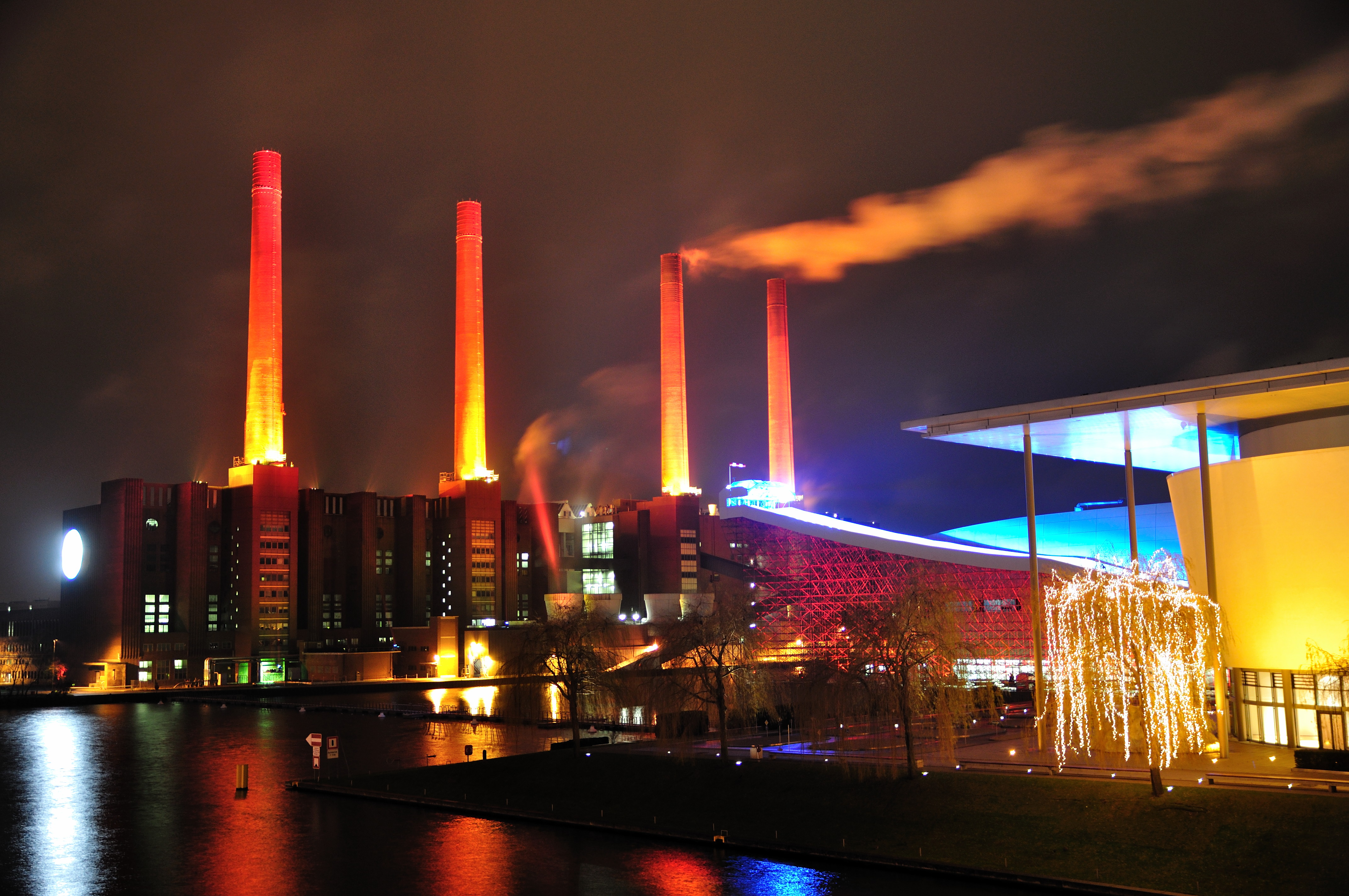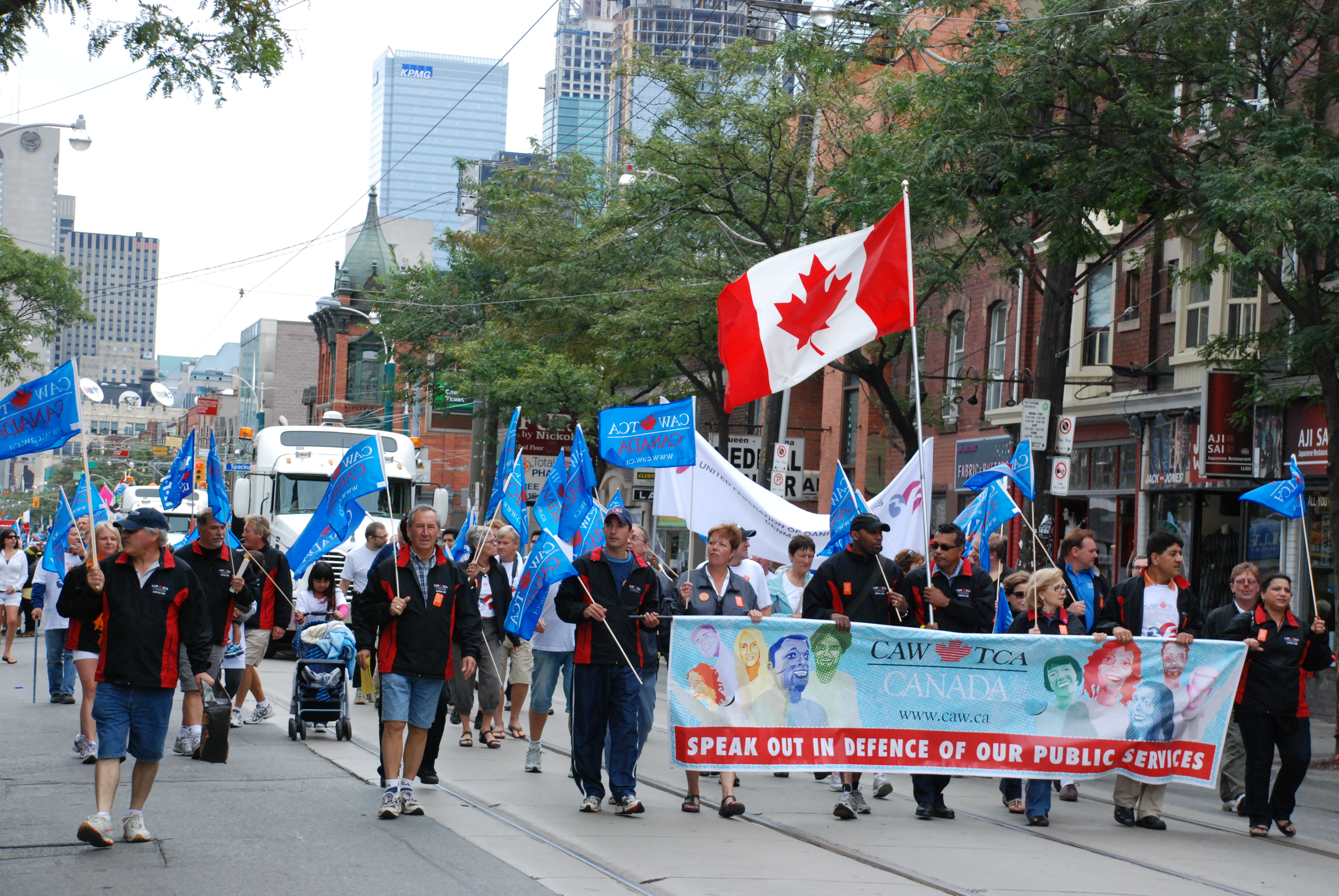
Human history may be traced in the move from field to city, from local farm to industrial agriculture, and with that – from indentured field serf to urban worker. Some sociologists say that human history is the history of cities. Cities may also be the birthplace of human, and worker, rights. An example: Wolfsburg, Germany, began as the Duchy of Magdeburg, then became the Stadt des KdF-Wagnes bei Fallersleben (“City of Strength Through Joy at Fallersleben”) as a planned town built to house workers for a factory producing the Volkswagen Beetle car. Volkswagen workers organized labor unions through collective agreements ensuring rights of more than 120,000 workers through the Volkswagen Group Global Works Council (GWC).

From the days of Charlemagne and into medieval times, as workers began to move into cities, they organized crafts and trades into guilds. The word “guild” comes from the Anglo-Saxon word “gild” and is related to “geld” meaning money. We still have an echo in today’s word for money in German: Das Geld. In medieval times, each guild member paid a set amount of money into a common fund to support worker training (apprentice, journeyworker, mastercraftsperson) and family benefits for the wellbeing of workers’ health and family support in the case of injury or death. Guilds morphed into trade unions when the owners of businesses changed to outside investors who were not craftpersons themselves. Labor rights were born in the city and have continued to find their growth in urban environments.
Workers and Rights. Some credit present day labor rights activist Robert Owen, a manufacturer from Wales, with the concept of the eight-hour workday. In 1817, Welsh advocated 8/8/8/ (eight hours labor, eight hours recreation, eight hours rest). Fifty years later, workers in Chicago demanded the Illinois Legislature to pass a law limiting work to eight hours per day. Although the law passed, a loop hole remained and many factory laborers were still overworked and underpaid. On May 1, 1867, they went on strike. The movement shut down Chicago, and soon other cities across the United States and Europe joined the strike. That event in 1867 led to what is now known as May Day or International Workers’ Day.

Labor. Peter McGuire, general secretary of the Brotherhood of Carpenters and Joiners first voiced in 1882 the call for a holiday for “the laboring classes who from rude nature have delved and carved all the grandeur we behold.” McGuire’s message echoed that of the medieval guilds: labor and work are forms of art and should be treasured and honored by a holiday. A leader of a similar surname, Matthew Maguire, secretary of Local 344 of the International Machinists, proposed the same holiday. Their messages were heard.

In the shadow of the Brooklyn Bridge, 10,000 city workers gathered in New York City on 5 September 1882 to rally for improvement in labor conditions. When the American government even began tracking work hours in 1890, the average factory workers clocked in 100 hours per week. Ensuing years strengthened the movement for better working hours and recognition of the major role workers play in business and economics. Oregon was the first state to recognize Labor day but Colorado, Massachusetts, New Jersey, and New York soon joined. In 1894, the Pullman strike in Chicago, Illinois jammed rail traffic throughout the country. During the strike and crisis, President Grover Cleveland signed Labor Day into law, as Congress passed an act declaring a national holiday to honor labor on the first Monday in September. Finally, in 1894, Labor Day became an official national holiday. Canada also celebrates Labor Day, but most of the world honors workers on May 1.

Worker rights continue to be an important issue around the world. In some places, children labor. In other places, women cannot work outside the home. Factory workers are often subject to unhealthy and even lethal conditions: 1500 workers died in preventable factory disasters in the garment industry in fires one decade ago. The 2013 Accord on Fire and Building Safety in Bangladesh made progress in setting new standards; a 2018 Transition Key Accord strengthened the standards to legally binding agreements between trade unions and brands; signatories include an oversight chair from the International Labour Organization (ILO)

Women’s working rights are a special issue. Women make up 70% of the labor force in some export processing zones (EPZs) in Asia, the Americas, and Sub-Saharan Africa where some bans on unionization still exist. The ILO Equal Remuneration Convention (No. 100), Discrimination in Respect of Employment and Occupation (No. 111), and Maternity Protection Convention (No. 183) have helped protect some rights but more is needed. In 1969, the International Labour Organization (ILO) received the Nobel Peace Prize; fifty years later, the ILO issued a new vision when convening the Global Commission on the Future of Work.
Every era brings new challenges for labor, work, and rights. In 2023, the union of Screen Actors Guild and American Federation of Television and Radio Artists (SAG-AFTRA) declared a strike approved by 98% of the members. One concern of the striking union members is the implications of artificial intelligence (AI) and the expansion of streaming services.These artists joined the 11,000 members of the Writers Guild of America who are also on strike. Again, the theme of the guild – and its blend of artistry and rights – finds a place in history.

If you are reading this post in Canada or in the United States, you may be enjoying a day of rest or even a traditional cook-out. But there is more to Labor Day than a long weekend. How will you celebrate and honor worker equality, justice, rights, and the fruits of our individual, and collective, labors?
Bangladesh Accord Foundation. “Accord on Fire and Building Safety,” https://bangladeshaccord.org/
. International Labor Rights Forum. “Women’s Rights and Global Labor Justice.” https://laborrights.org/issues/women’s-rights
International Trade Union Confederation (ITUC)
International Labour Organization (ILO). “Global Commission on the Future of Work,” https://www.ilo.org/global/topics/future-of-work/WCMS_569528/lang–en/index.htm
Kaunonen, Gary and Aaron Goings. Community in Conflict. Michigan State Press, 2013.
Langley, Winston E. and Vivian C. Fox. Women’s Rights in the United States: A Documentary History. Praeger, 1994. ISBN: 978-0313287558.
Loomis, Erik. A History of America in Ten Strikes. The New Press, 2018.
Smith, Toulmin, Editor, with essay on history and development of the gilds by Lujo Brentano. “English Gilds: The Original Ordinances of more than One Hundred Early English Guilds,” Oxford University Press. Digital facsimile by University of Michigan. https://quod.lib.umich.edu/c/cme/EGilds?rgn=main;view=fulltext
SAG-AFTRA. https://www.sagaftra.org
Seabrook, Jeremy, “The language of labouring reveals its tortured roots.” The Guardian. https://www.theguardian.com/commentisfree/2013/jan/14/language-labouring-reveals-tortured-roots1
Terkel, Studs. Working. Pantheon Books, 1974.
Toynbee, Arnold. Editor. Cities of Destiny. London: Thames & Hudson, 1967.
Zraick, Karen. “What is Labor Day? A History of the Workers’ Holiday.” 4 September 2023. The New York Times. https://www.nytimes.com/article/what-is-labor-day.html

Insightful! I strongly believe in a return to the guild model of workers representing themselves, and support workers’ cooperative initiatives to cut through union bureaucracy which perpetually concedes to business owners on workers’ demands for fair wages and safe conditions. Paying people what they deserve and allowing them dignity and respect in their profession would only promote social stability and public health in the face of growing financial insecurity, rising costs of living, a mental health crisis, and historic levels of economic inequality. Education also ought to highlight the need for labor organization of the journeyman, apprentice and master. If the government won´t fight for our rights, it is our social responsibilty to correct these errors for a more just future of human labor.